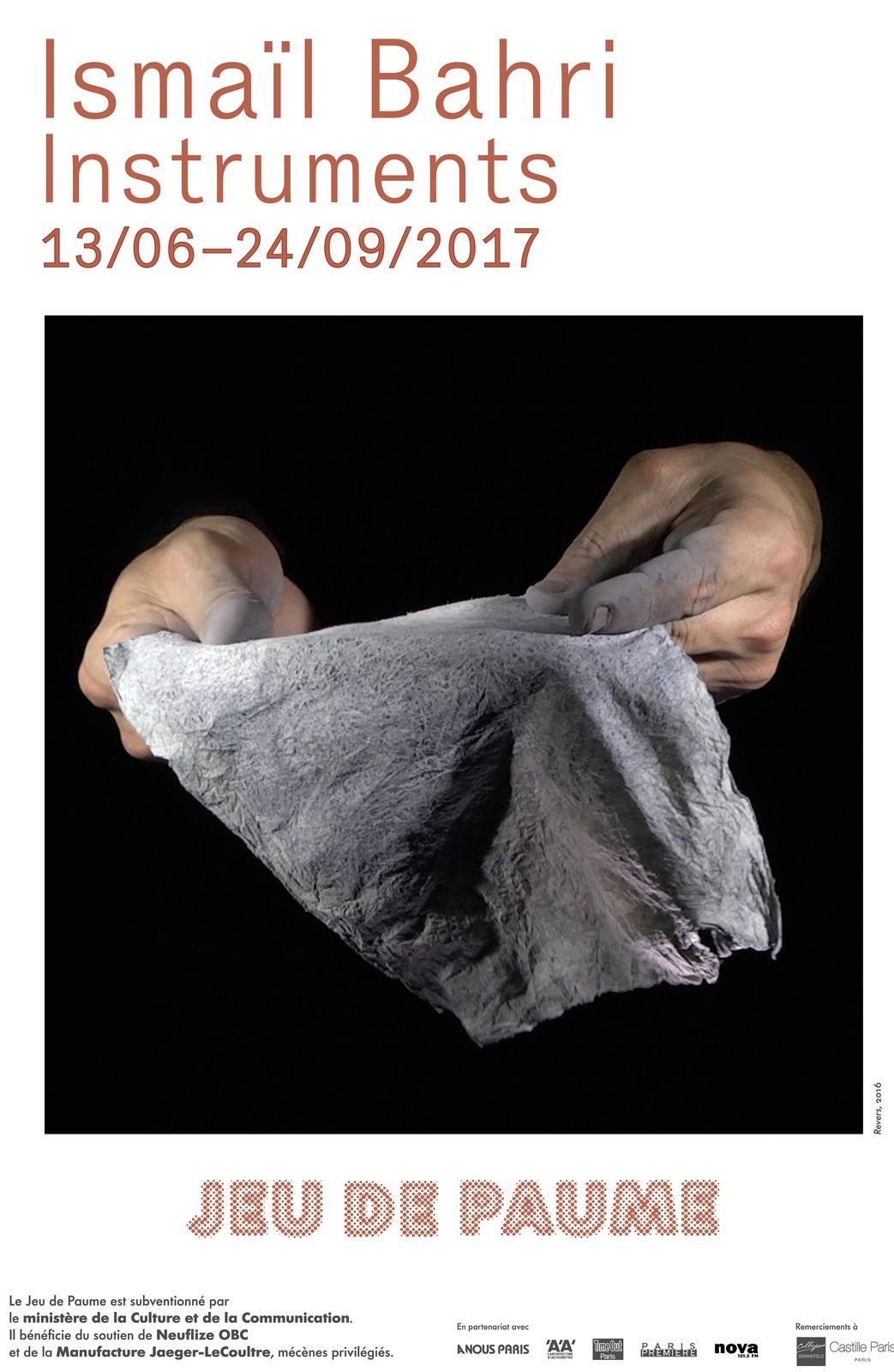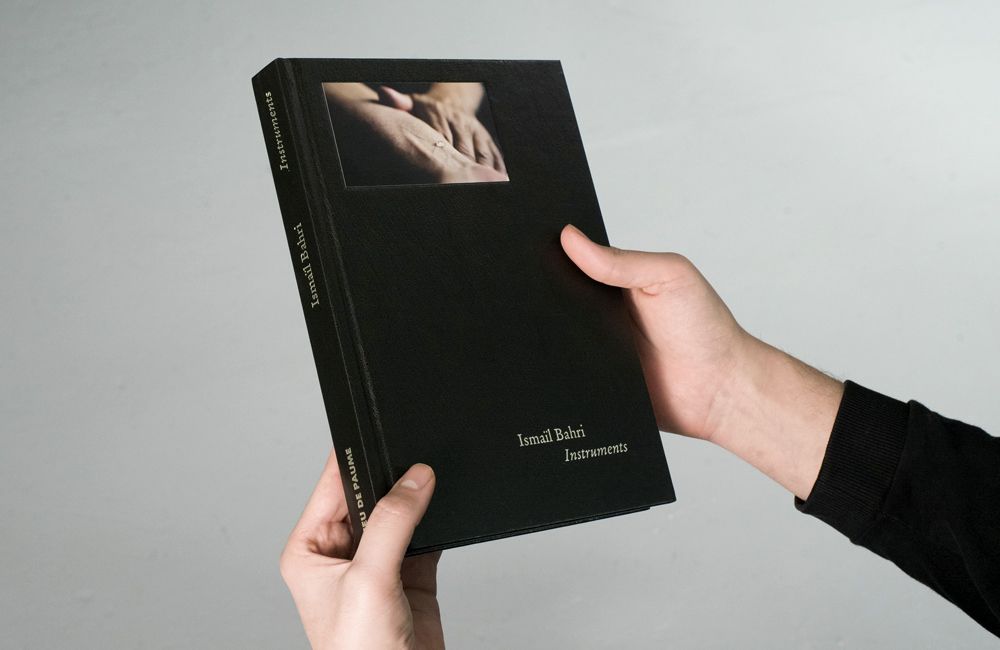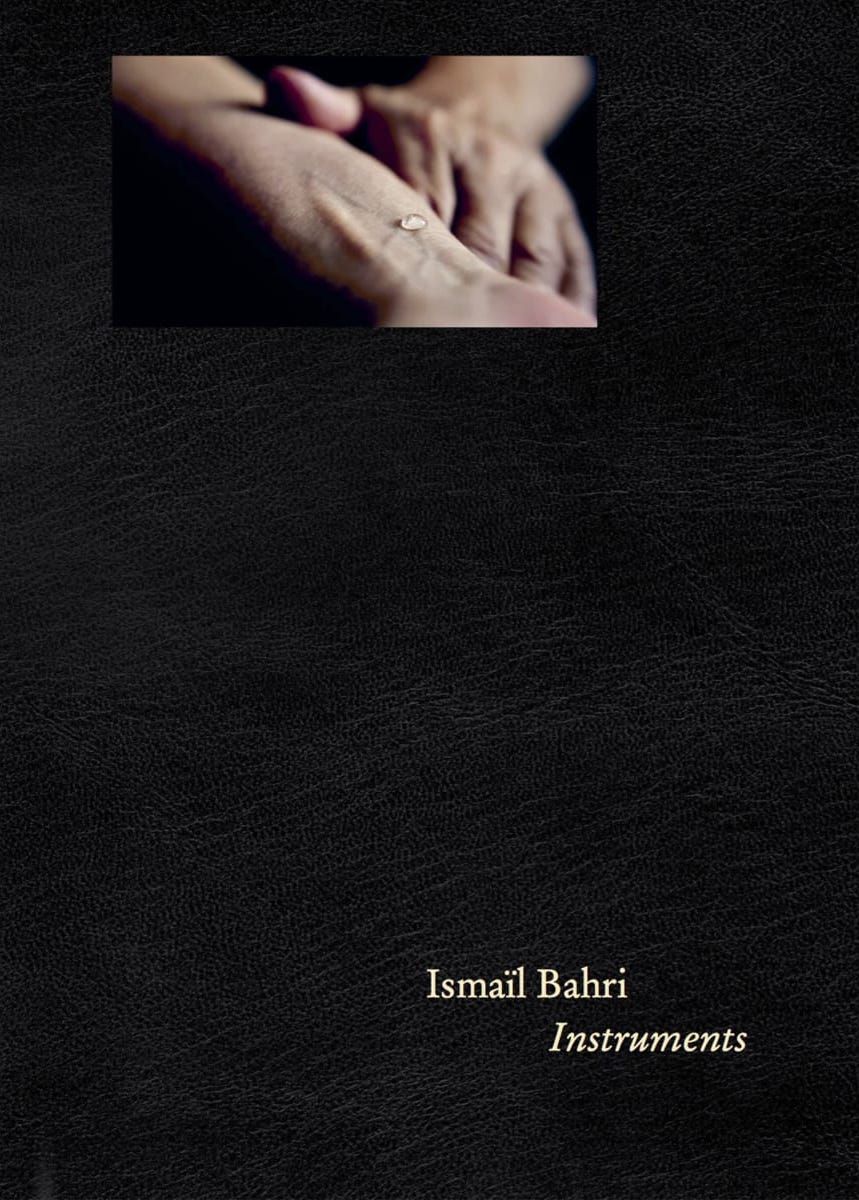Instruments
Solo exhibition
Curators : Marta Gili and Marie Bertran
Produced by Jeu de Paume, Paris
Jeu de Paume / Paris
June 13 – September 24, 2017
Exhibition catalogue / pdf

Catalogue


ISBN : 978-2-915704-68-6
EAN : 9782915704686
Catalogue / pdf / Français / English
The Jeu de Paume opens its doors to Ismaïl Bahri for his first major exhibition. Born in Tunis in 1978, the artist lives and works between Paris and Tunis. He works mainly with video although he continues to make drawings, photographs and installations. Ismaïl Bahri’s work is often produced from a series of operations featuring basic elements of everyday life, with the action stemming from the interaction between them: a drop of water, for example, placed on someone’s skin and reacting to arterial pulsations; a thread being wound in; or the fibres in a sheet of paper becoming permeated with ink. With his attentive eye, his sense of detail and his taste for the enigmatic, the artist creates micro-events while at the same time questioning the conditions for their visibility.
Instruments, the exhibition at the Jeu de Paume, presents a selection of his principal works along with two new works, conceived and produced for the occasion. This set of eight video works reflects the main themes running through his œuvre; such themes as fundamentals, duration, scale, and transformation, but also visibility and invisibility, mystery and solving the mystery. The exhibition seeks to develop a movement of progressive enlargement, starting with the intimate and leading outwards to landscape, light and a certain sort of abstraction.
Ismaïl Bahri has been the subject of a number of one-man shows: in 2014 at Les Églises de Chelles – Centre d’art contemporain, and the Espace Khiasma, Les Lilas, Paris. He has also featured regularly in group exhibitions. In 2016, his work was presented in Incorporated! at the Ateliers de Rennes – Biennale d’art contemporain, and in the exhibition “Uprisings”, at the Jeu de Paume. His videos have also been screened at numerous film festivals such as the FIDMarseille, the TIFF Toronto Film Festival and the NYFF New York Film Festival. In 2017, he will be taking part in the Sharjah Biennale and the IFFR Rotterdam International Film Festival.
Video occupies an important place in Ismaïl Bahri’s work. It makes it possible for him to operate — discreetly and ephemerally — in both interior and exterior situations. It allows him to lay down an entire, ongoing process and to introduce a potential development into it, sometimes even a narrative. Ismaïl Bahri chooses in some cases to look reflexively at the camera in order to “maintain a fundamental relationship with the technique and the way images appear” (Jean-Louis Comolli). The best example of this is his film Foyer, in which one gradually comes to reflect on the frame and the surroundings, as well as on the screen and the notion of projection itself. As an ‘instrument for seeing’, the camera records an experiment in which it is also the subject. Placed in the street, it stands out and attracts the attention of passers-by, who ask the filmmaker questions about the experiment in progress. The film consists of the discussions thus triggered, making the camera the element that both affects and is affected by the experiment it records.
In every one of his pieces, Ismaïl Bahri focuses on the question of movement by particularly studying the way a subject changes state when it is set in motion. The latter is usually subject to the conditions of a meeting between two elements. For the artist, it is a matter of being at the intersection, where he can watch ‘how one element actually shows what is happening to another.’ He becomes the conscientious observer of these upheavals and conveys them to us in concise and delicate works. In Ligne, for example, a drop of water twitches in a steady rhythm on somebody’s skin — imperceptibly at first — and in so doing, it acts as a metronome-cum-monitor, amplifying the pulsations of the person’s blood flow.
Movement produces displacements, variations that entail formal effects. The things that move also provide evidence of what is happening and lead one to reflect on the impermanent character of any form. In the film Source, two hands hold the edges of a sheet of white paper. A glowing point appears, becomes a circle, then a hole, which grows and spreads outward on the paper like ripples on a pond; then, corrupted and consumed, the paper disintegrates. But, like the paper, the circle is also doomed to disappear. From the moment it appears, it contains the seeds of its own destruction.
Ismaïl Bahri’s experiments are sometimes very short, lasting no more than a few fleeting seconds, but they sometimes take several minutes and might even be repeated on a loop. One of the strengths of his work is that it holds the attention. The eye hunts for clues or signs, strives to find a way of understanding an image, sees it as a riddle to be solved. In the work entitled Dénouement, it is not until the sixth minute – almost the end of the video – that the abstract landscape gives way to a description of something tangible, when the human figure appears as the agent manipulating the thread.
Ismaïl Bahri focuses his attention on the everyday objects in front of him. He quizzes them, tests them, looks at them from a different angle. And these objects — a glass, a pin, a page from a magazine, for example, — by assuming basic shapes — round, rectangular, cylindrical, flat — can then return to their original function, which is to be small enough to handle easily. In fact, the artist attaches great importance to the hand, particularly in Revers, but also in Dénouement. Whether as an instrument to work with, or for displaying oneself, or for communication, to protect or to caress, the hand conveys our thoughts and intentions. Hands have been a subject since the caves of prehistory, but they also take us into the private, domestic sphere so dear to Ismaïl Bahri.
Ismaïl Bahri’s rigorous, delicate, condensed work is reminiscent of the haiku, those short, highly codified Japanese poems that are an attempt to share an emotion inspired by the transience of nature while, at the same time, encouraging reflection. Bahri’s work also seeks to celebrate impermanence and to sharpen our attention to the things that surround us.